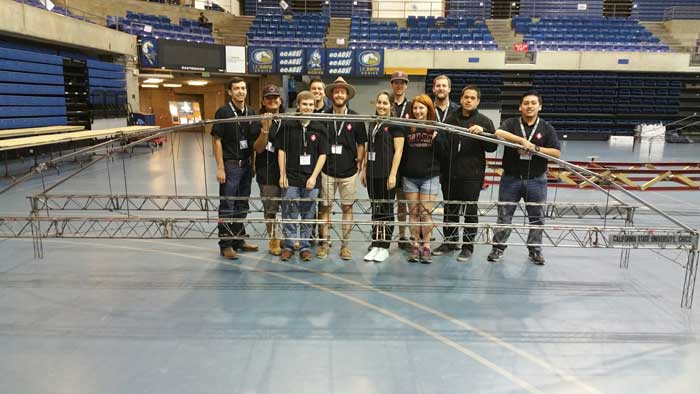Published 2011-12-28T16:18:05Z”/>
<h2 class=”field-label”>Location: </h2> <ul class=”field-items”> <li class=”field-item even”>
<a href=”/america”>America</a>
</li> <li class=”field-item odd”>
<a href=”/united-states”>United States</a>
</li> <li class=”field-item even”>
<a href=”/virginia”>Virginia</a>
</li> </ul> <h2 class=”field-label”>Collection: </h2> <ul class=”field-items”> <li class=”field-item even”>
<a href=”/us-civil-war”>U.S. Civil War</a>
</li> </ul>
<!– google_ad_section_end –>
<h2 class=”field-label”>Social: </h2> <ul class=”field-items”> <li class=”field-item even”>
<a href=”/war”>War</a>
</li> </ul> <div class=”field field-name-field-image field-type-image field-label-hidden view-mode-rss”> <div class=”field-items”>
<a href=”http://www.documentarist.com/sites/default/files/images/studying_the_art_of_war_scene_at_fairfax_court-house._virginia._june_1863.jpg” title=”Studying the Art of War, scene at Fairfax Court-House. Virginia. June 1863″ class=”colorbox” rel=”gallery-585″><img src=”http://www.documentarist.com/sites/default/files/styles/medium/public/images/studying_the_art_of_war_scene_at_fairfax_court-house._virginia._june_1863.jpg” width=”466″ height=”336″ alt=”Studying the Art of War, scene at Fairfax Court-House. Virginia. June 1863″ title=”Studying the Art of War, scene at Fairfax Court-House. Virginia. June 1863″ /></a>
</div> </div> <div class=”field field-name-field-viewfullsizeimage field-type-link-field field-label-hidden view-mode-rss”> <div class=”field-items”> <div class=”field-item even”><a href=”http://www.documentarist.com/sites/default/files/images/studying_the_art_of_war_scene_at_fairfax_court-house._virginia._june_1863.jpg” class=”colorbox”>Click for Full Size Image</a></div> </div> </div> <div class=”field field-name-body field-type-text-with-summary field-label-hidden view-mode-rss”> <div class=”field-items”> <div class=”field-item even”>
Studying the Art of War, scene at Fairfax Court-House. Virginia. June 1863
A group at the headquarters, near Fairfax Court-House, taken in June, 1863. Thoughtful and erect, the most prominent figure is Colonel Ulric Dahlgren, then a Captain on the Staff of General Meade. Handsome, chivalric, one of the bravest of the brave, his character was fitly compared to that of the good knight, the Chevalier Bayard, and like him, he was truly “sans peur et sans reproche.” So noble a man, that of all the heroes who have perished for the nation, his loss is the hardest to realize. The story of his short but brilliant career has been written by abler hands, and is now a “household word.” Of its closing scenes, the writer narrowly escaped being a witness, having been invited to accompany the Colonel on that ill-starred expedition by which his life was sacrificed. Just recovering from the loss of his leg, and suffering acutely from any physical exertion, his active spirit could not be controlled, when he thought of his brothers in arms pining under the cruelties of Libby and Belle Isle. No ruthless raid was his, but a Christian effort to help the despairing Union Prisoners. None, who knew him, need be told how false was the document, claimed to have been found upon his person. General Meade, suspecting his inability to undergo the fatigues of an expedition in the inclement weather of February, was disinclined to give him permission; but Dahlgren, determined on his purpose, mounted his horse, and proceeding to a review of the Second Corps, rode so fearlessly over the fields, and under his frank smile, so well hid all traces of bodily suffering, that the General reluctantly permitted him to depart. After the review, when he came over (for the retirement it offered) to the writer’s tent, it was too evident how fearful had been the effort of his will.<br />
The officer upon the ground, wearing a straw hat, is Lieutenant-Colonel Dickinson, Assistant Adjutant General to General Hooker ( a position he held from the time that General first commanded a brigade, until the battle of Gettysburg. In that action the Colonel was hit in the arm with a link of a chain, thrown with other misiles from a rebel shell. On the recovery of his wound he retired from the service. The gentleman in foreign uniform is Count Zeppalin, of the Prussian army, then on a visit to this country. On the left is the figure of Major Ludlow, since better known as the General in Command of the Colored Brigade, which excavated, under a continual and heavy fire, the canal on the James, called Dutch Gap. The perils of that undertaking he faithfully shared, from first to last, doing much, by his cheerful bearing and example, to support his troops in their perilous work. The last of the group is Lieutenant (since Lieutenant Colonel) Rosencranz, a Swedish officer, on leave of absence, and occupying successively the position of Personal Aid upon the Staff of Generals McClellan, Burnside, Hooker, and Meade. Avery reliable soldier, and one of the best Aids on the Staff, his genial disposition, unfailing amiability, and keen appreciation of humor, made him acceptable everywhere. He was probably as well known as any officer in the field.
</div> </div> </div> <div class=”easy_social_box clearfix horizontal easy_social_lang_en”> <div class=”easy_social-widget easy_social-widget-twitter first”><a href=”http://twitter.com/share” class=”twitter-share-button”><br /> <br /></a>
data-url=”http://www.documentarist.com/studying-the-art-of-war-virginia-1863-june”
data-count=”horizontal”
data-lang = “en”
data-via=””
data-related=”:Check it out!”
data-text=”Studying the Art of War: Virginia 1863 June”>Tweet
</div> <div class=”easy_social-widget easy_social-widget-googleplus”> <div class=”g-plusone”></div> </div> <div class=”easy_social-widget easy_social-widget-linkedin last”><script type=”in/share”> </script></div> </div> <!– /.easy_social_box –>








